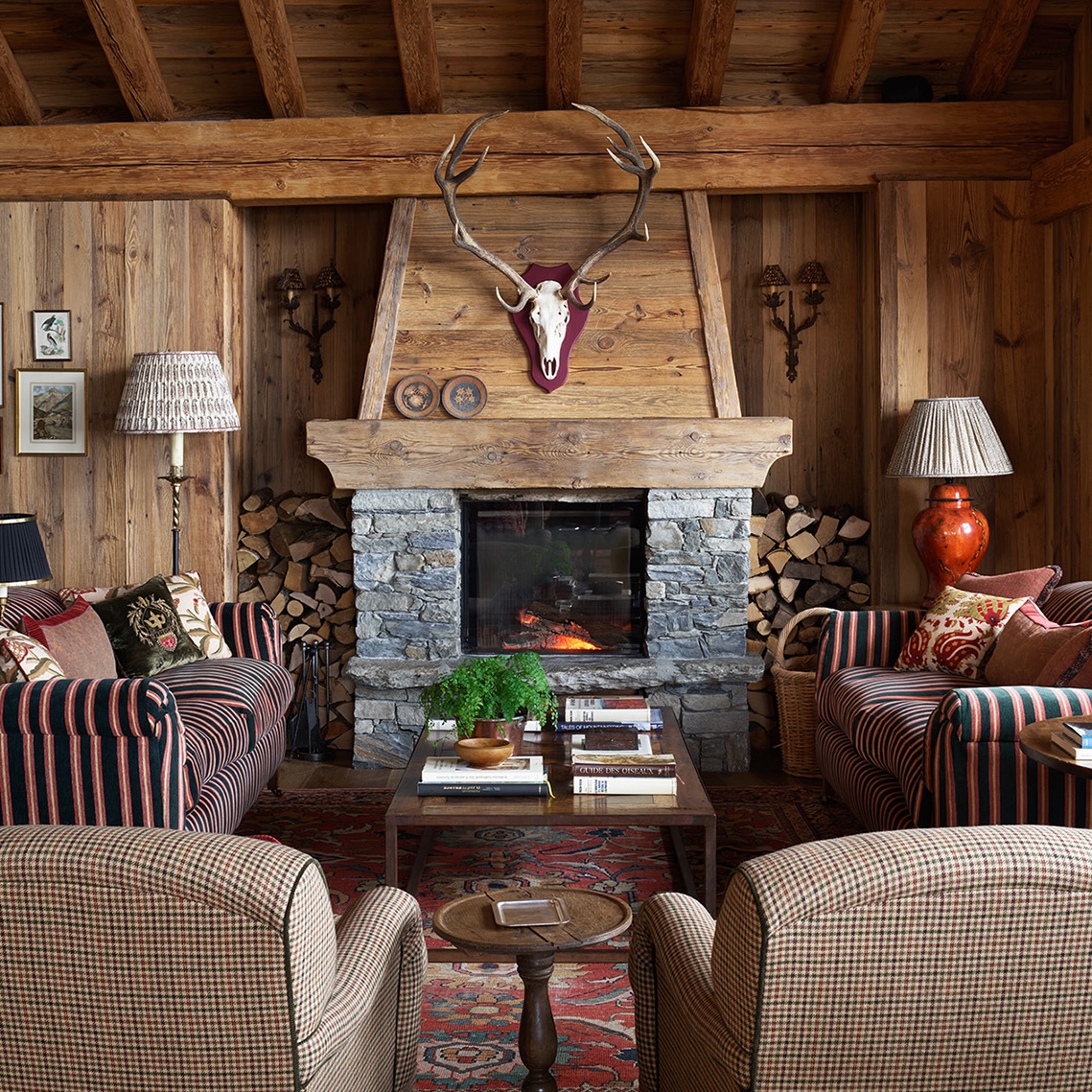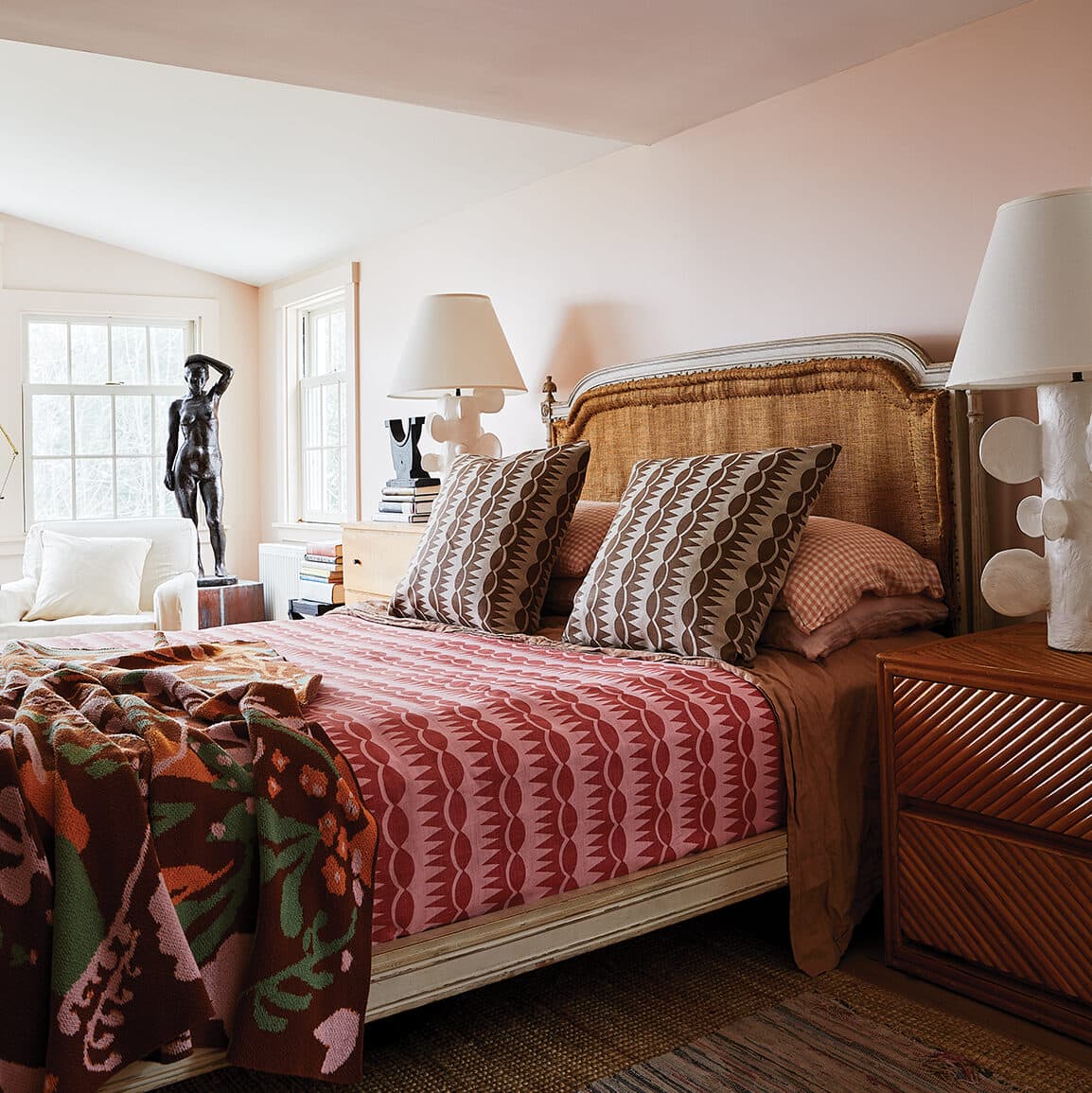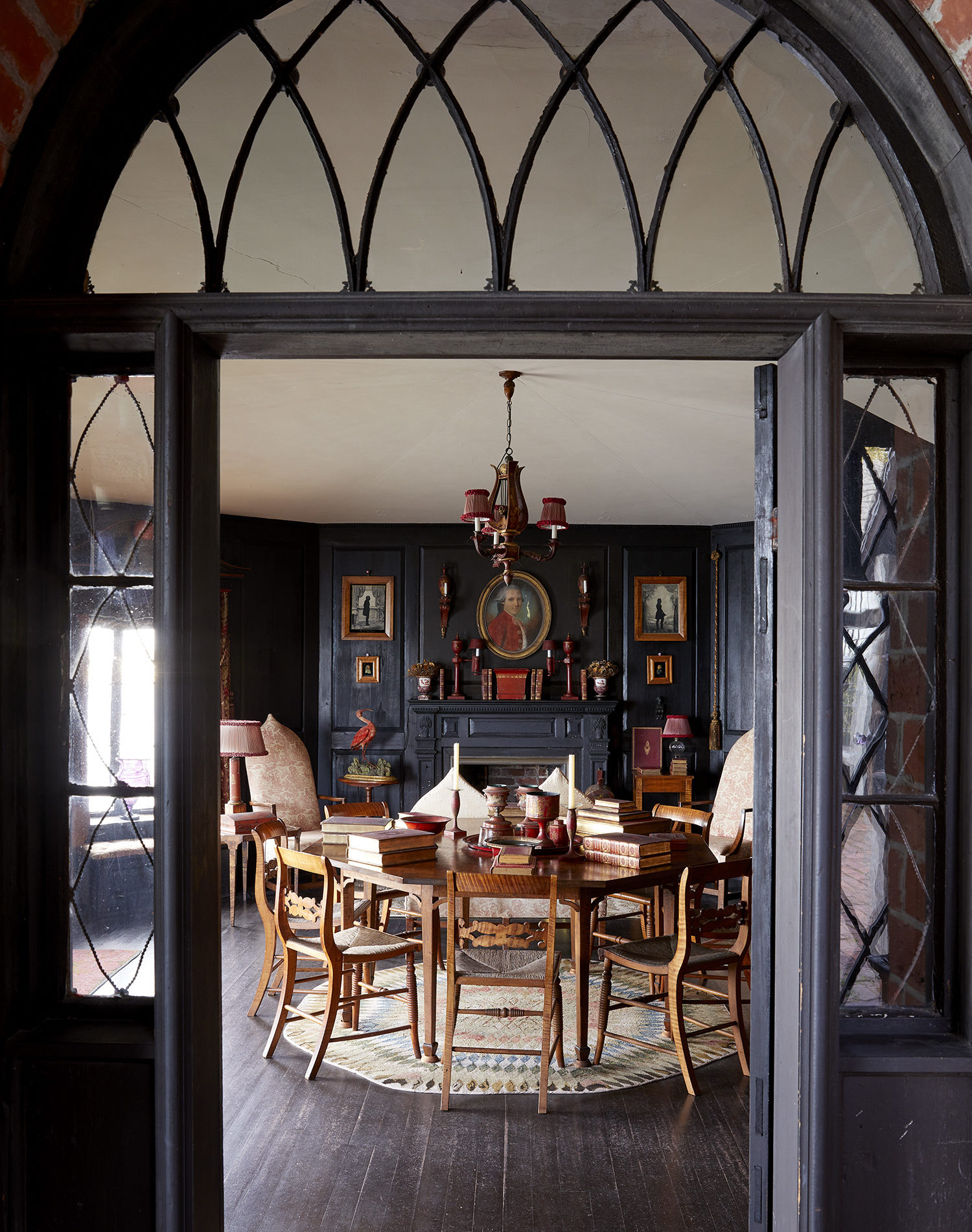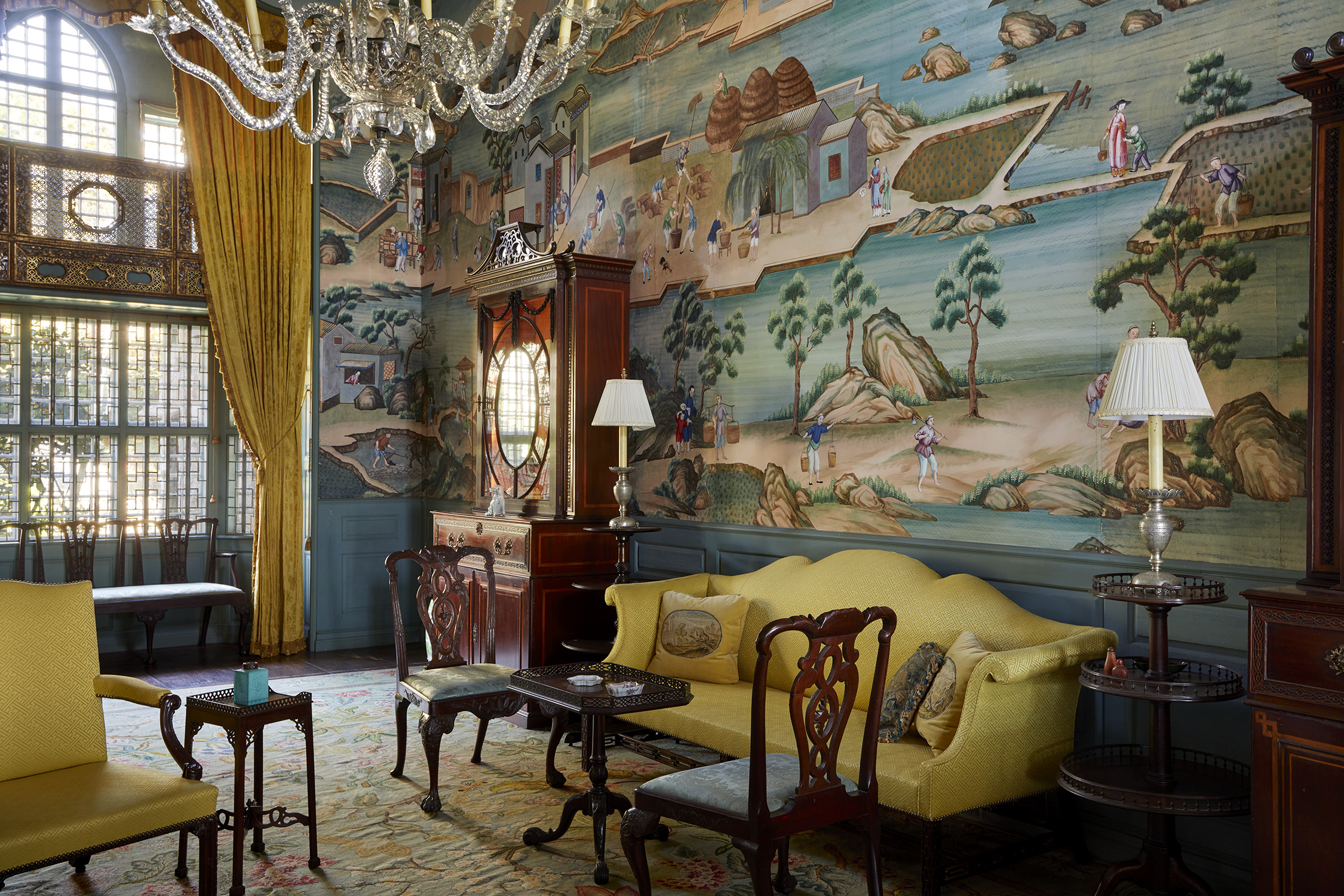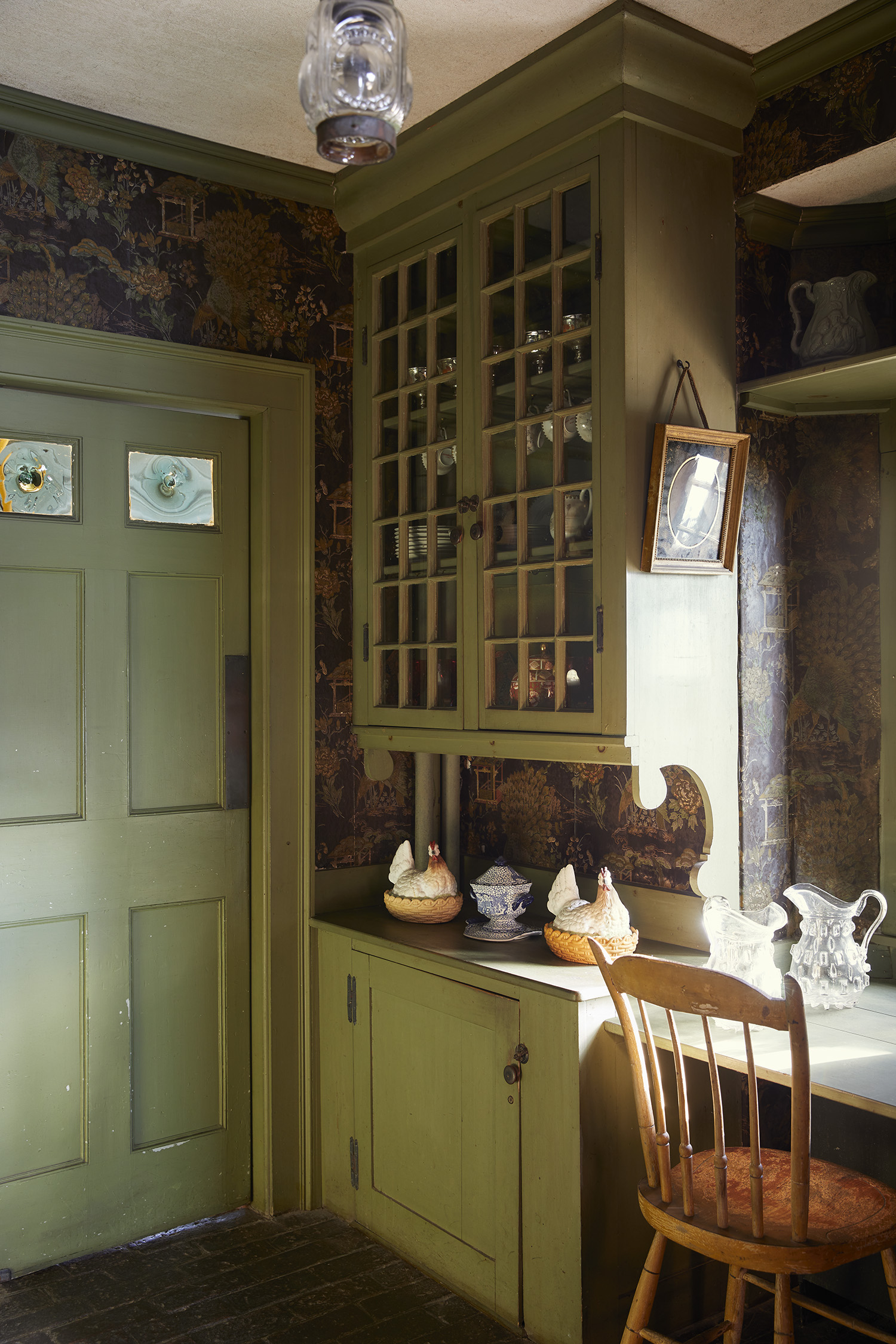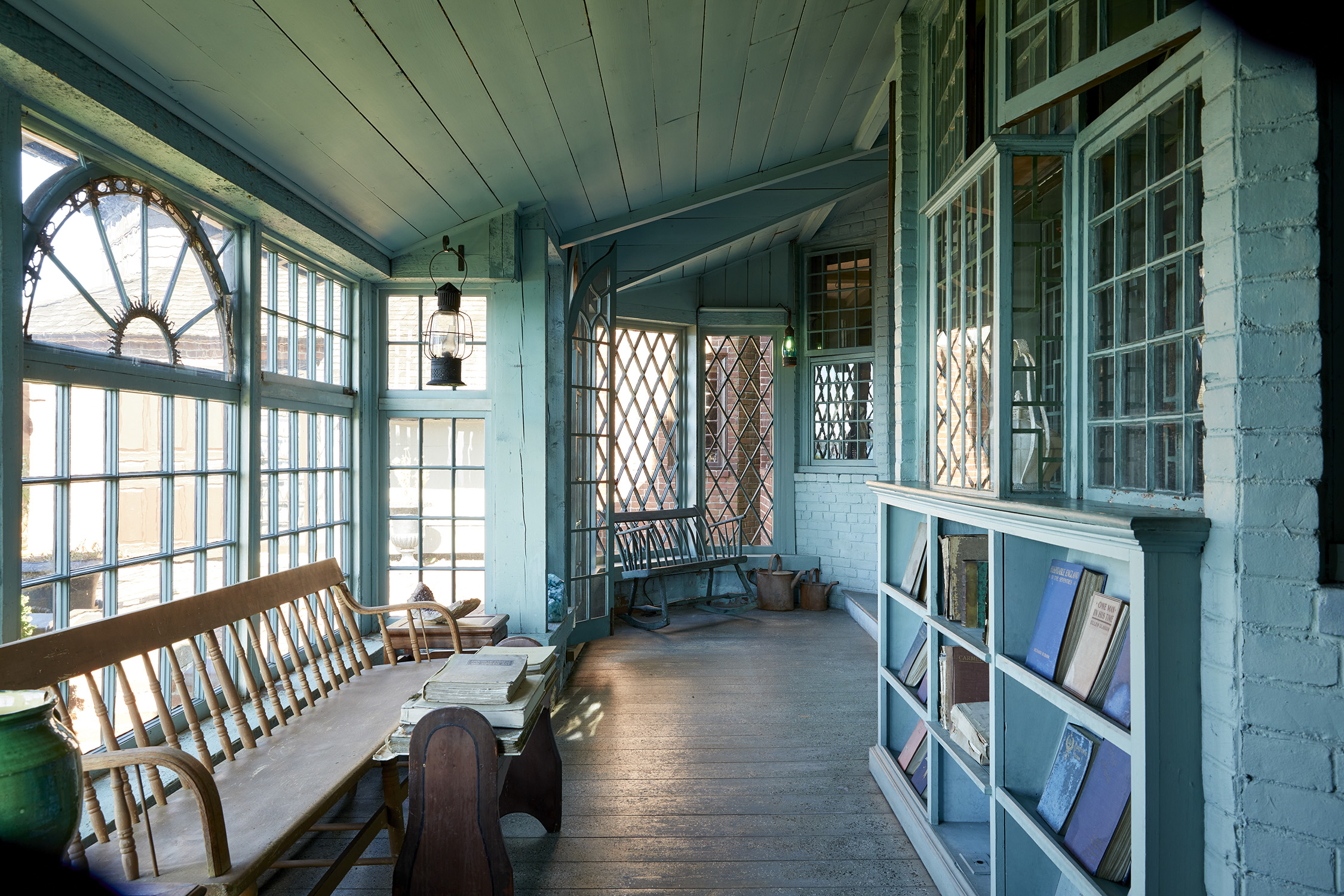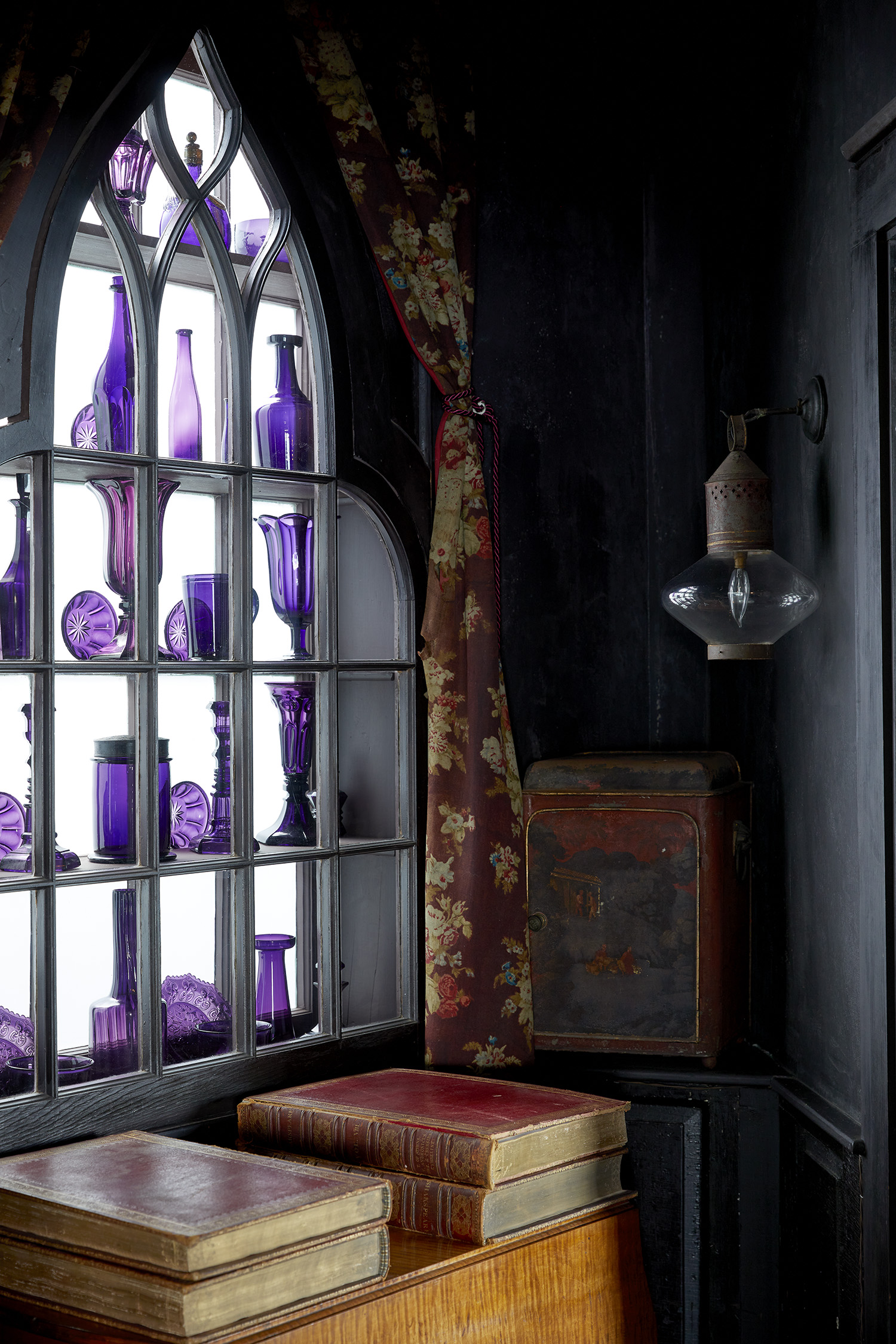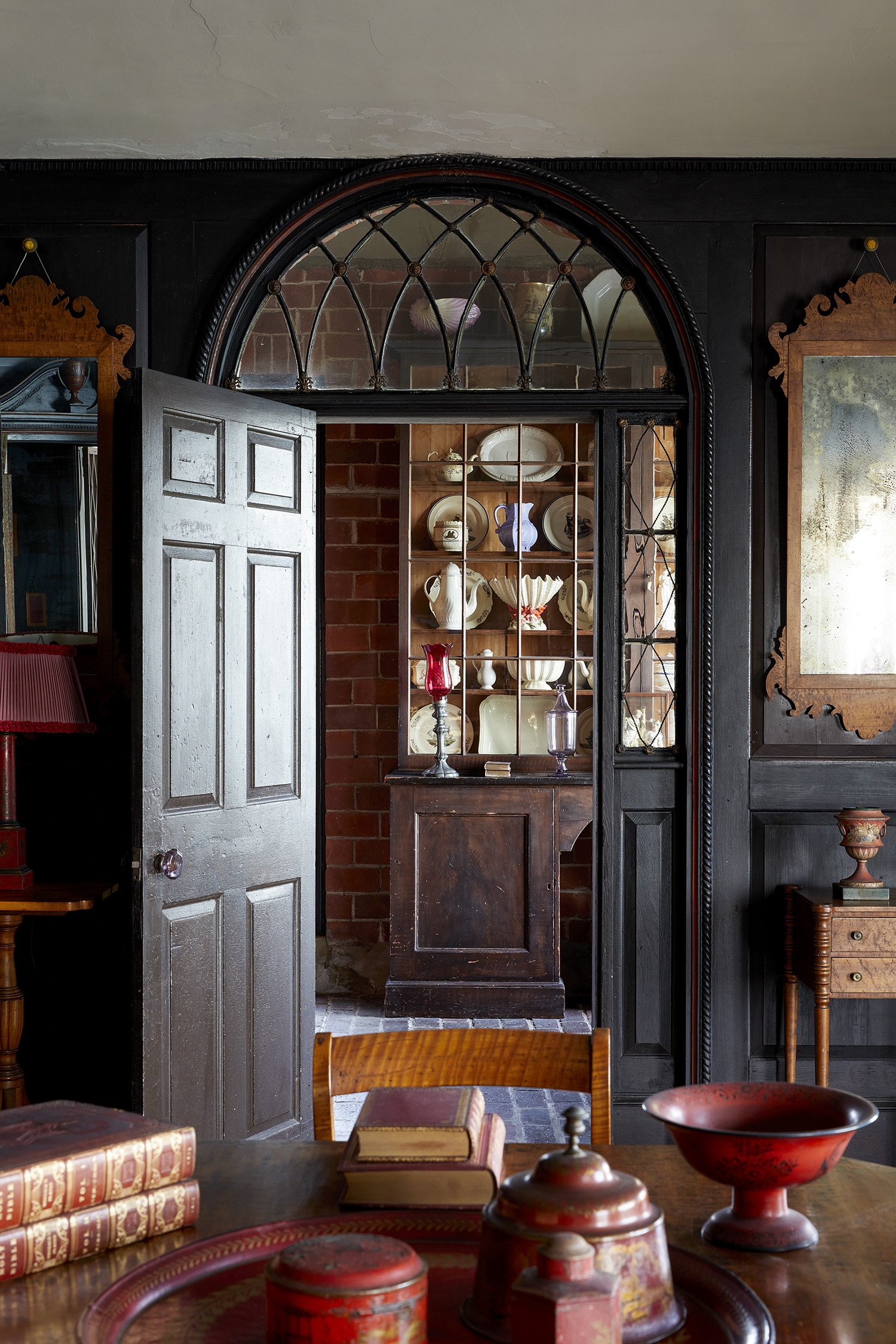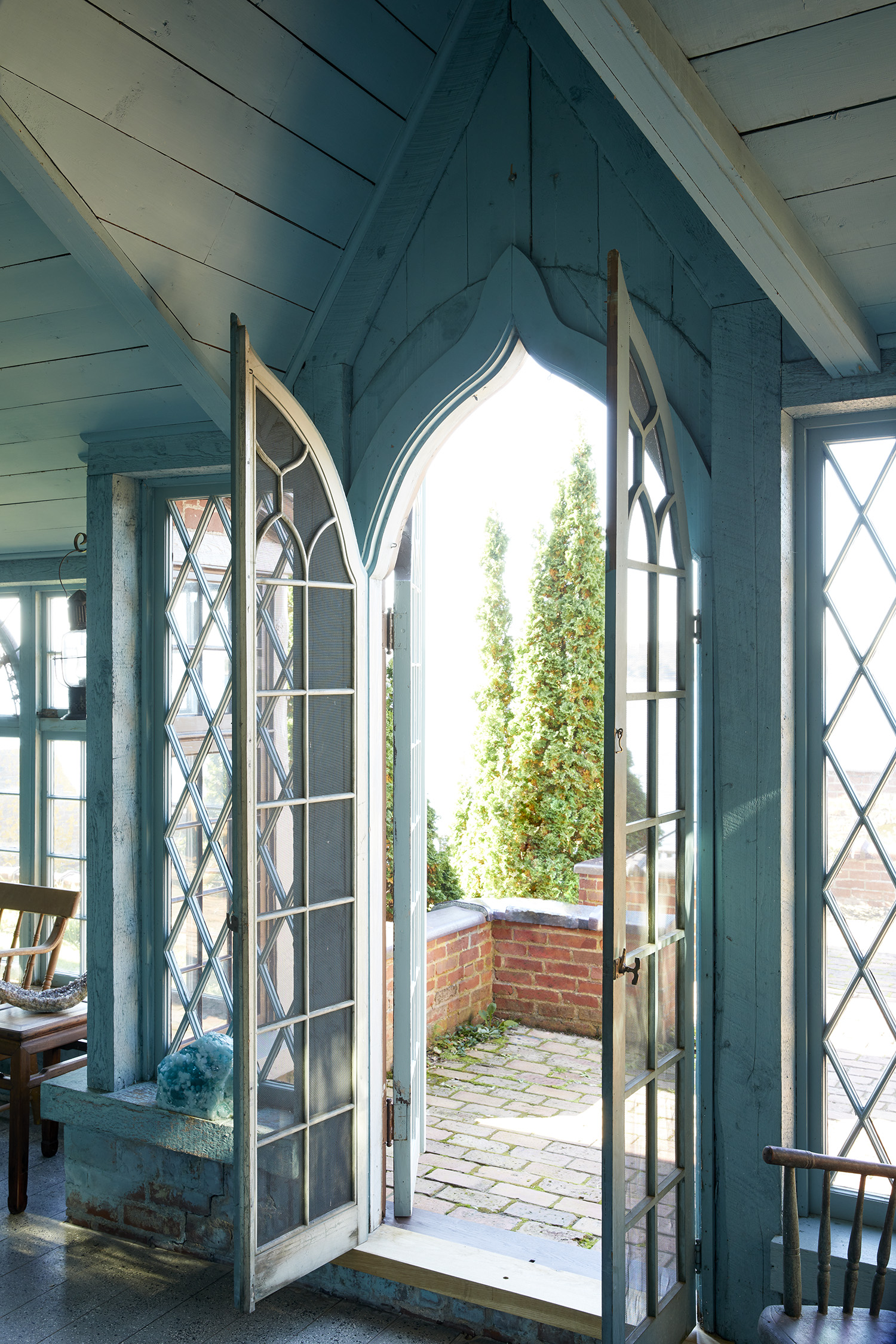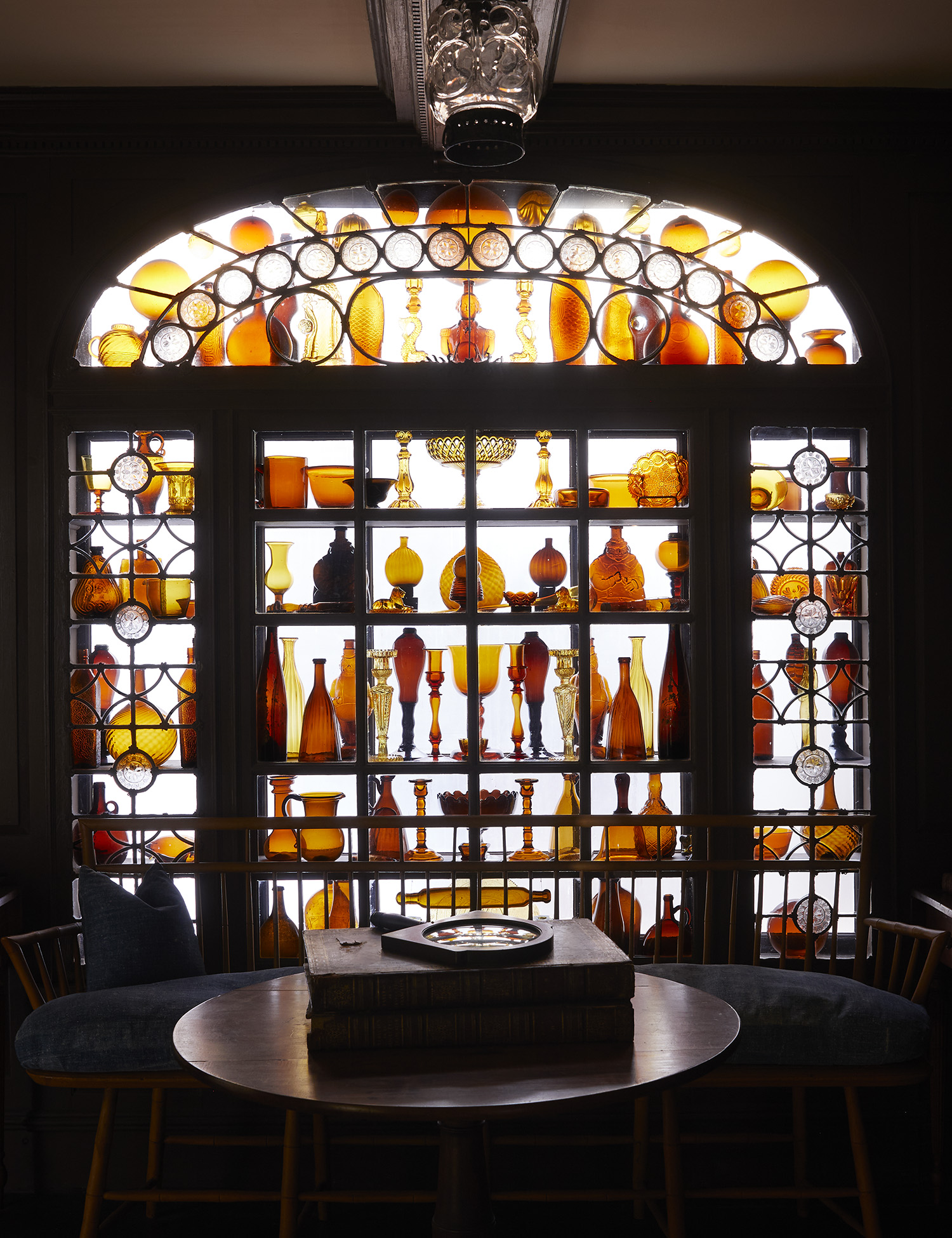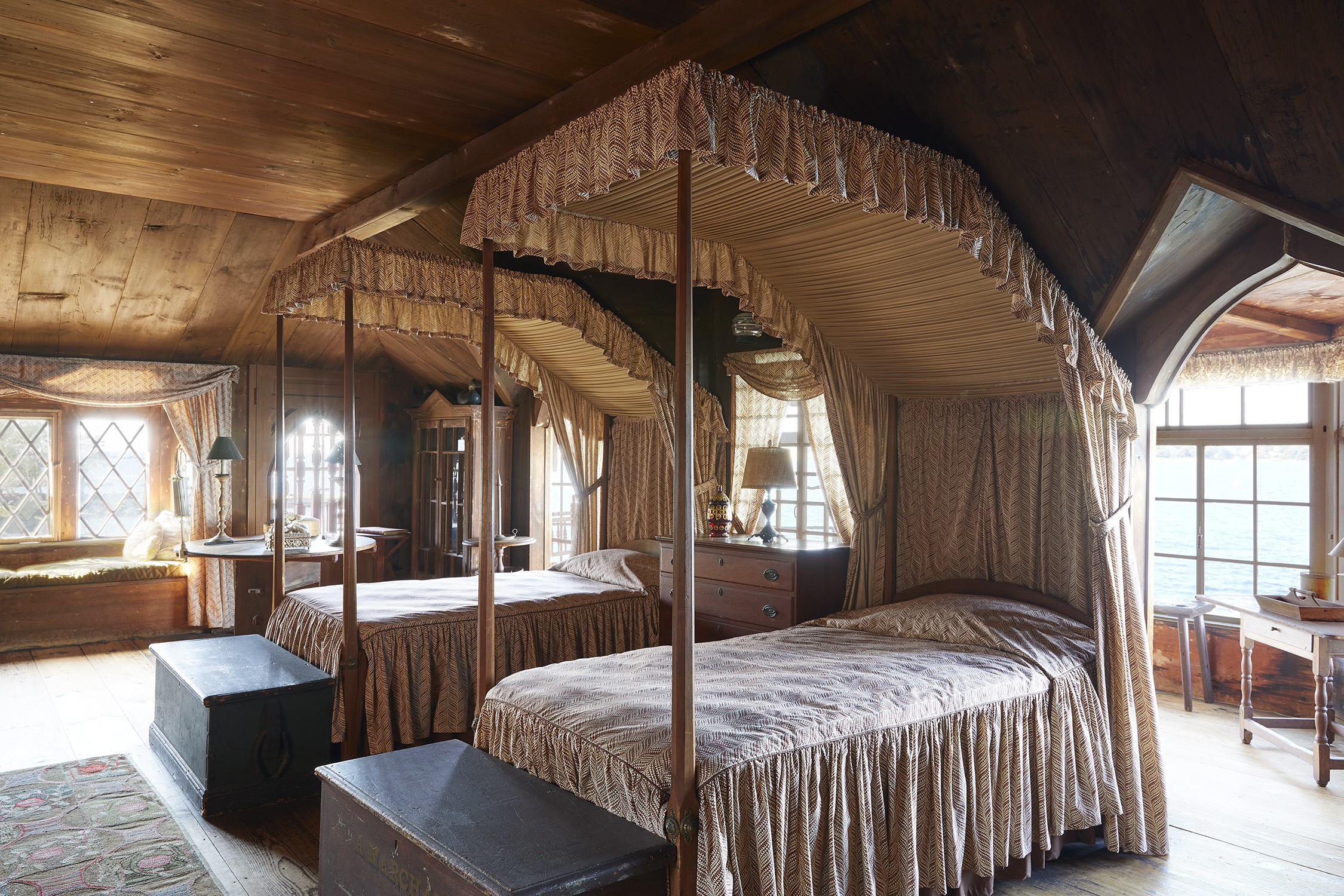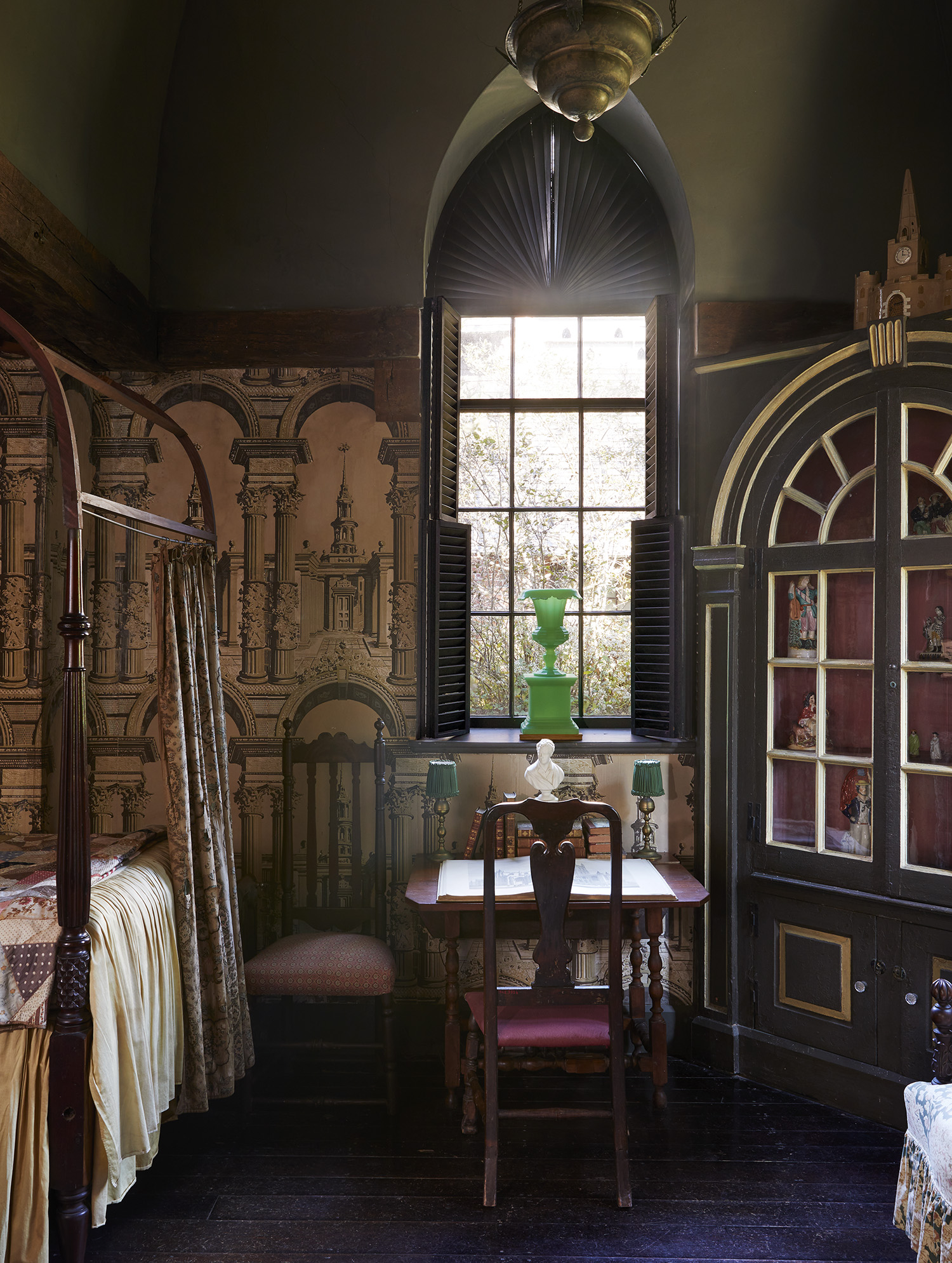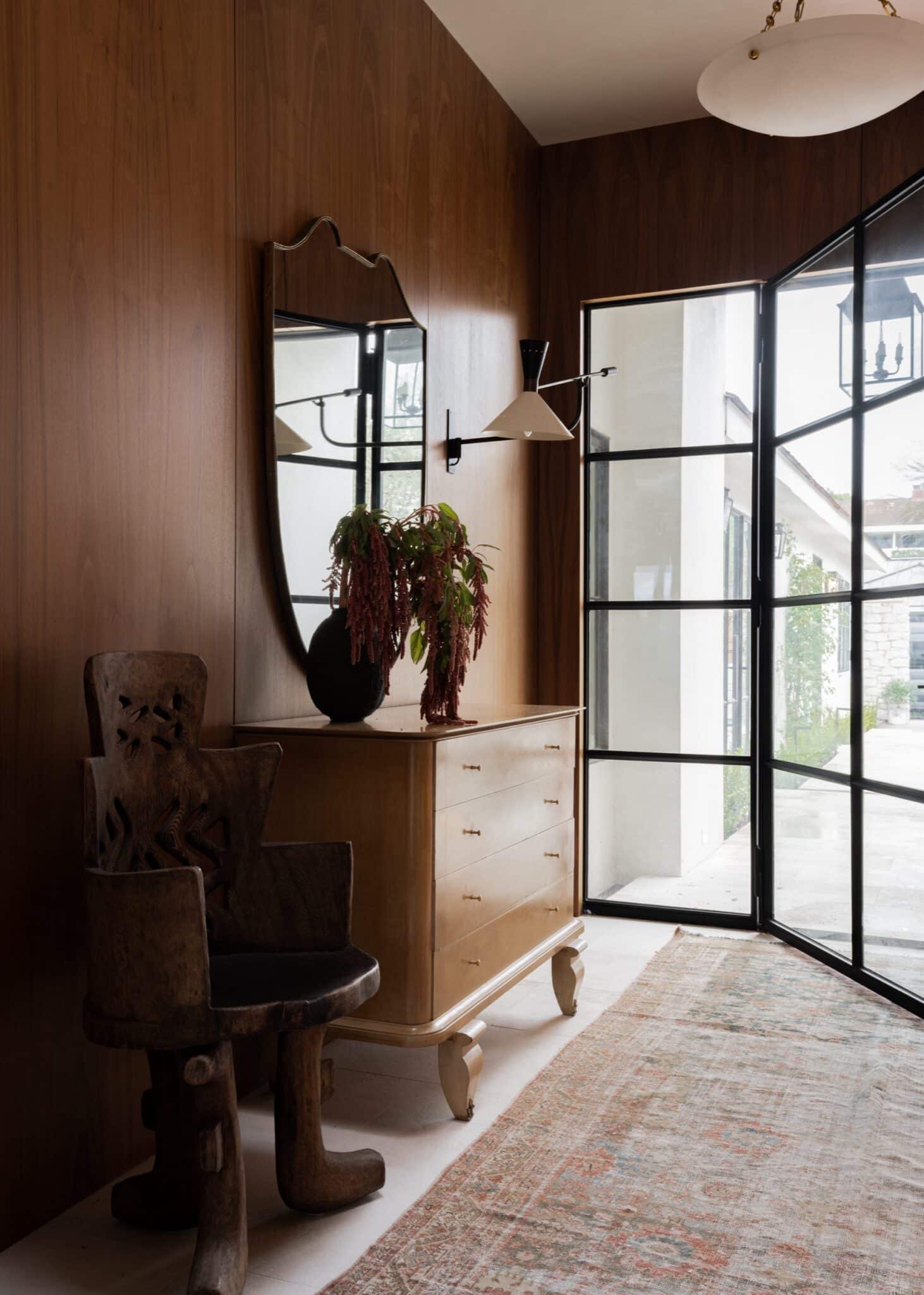By conventional measures, the man who dreamed up Beauport, the Sleeper-McCann House, is an enigma. Unlike his dear friend Isabella Stewart Gardner, the public-spirited arts patron who founded her own world-class museum, Henry Davis Sleeper kept a low profile, preferring to spend time with family and intimates at his town house in Boston and at Beauport, his summer home in Gloucester, Massachusetts. An antiquarian and collector who would eventually become one of America’s first professional interior decorators, he never partnered or had children, and after his untimely death from cancer in 1934, at age 56, nearly all of his personal and business papers vanished.
-
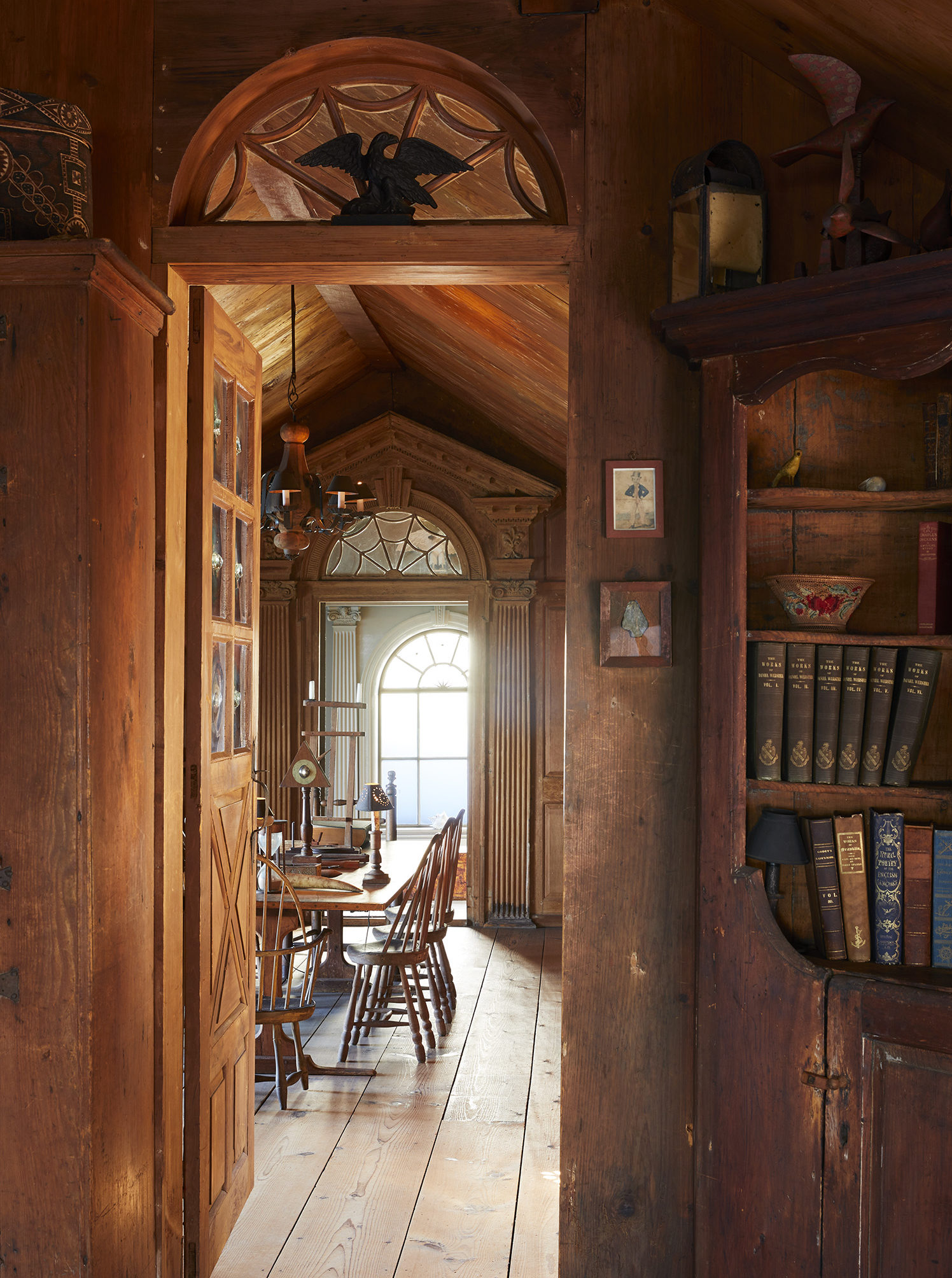
The Master Mariner’s Room is the last full room Henry Davis Sleeper added to Beauport, the Sleeper-McCann House in Massachusetts, and the one most obviously designed as a showcase. The large door with spider-web– patterned fan light was salvaged from a commission in Newport, Rhode Island, and was featured in Vogue in 1924.
Laura Resen -
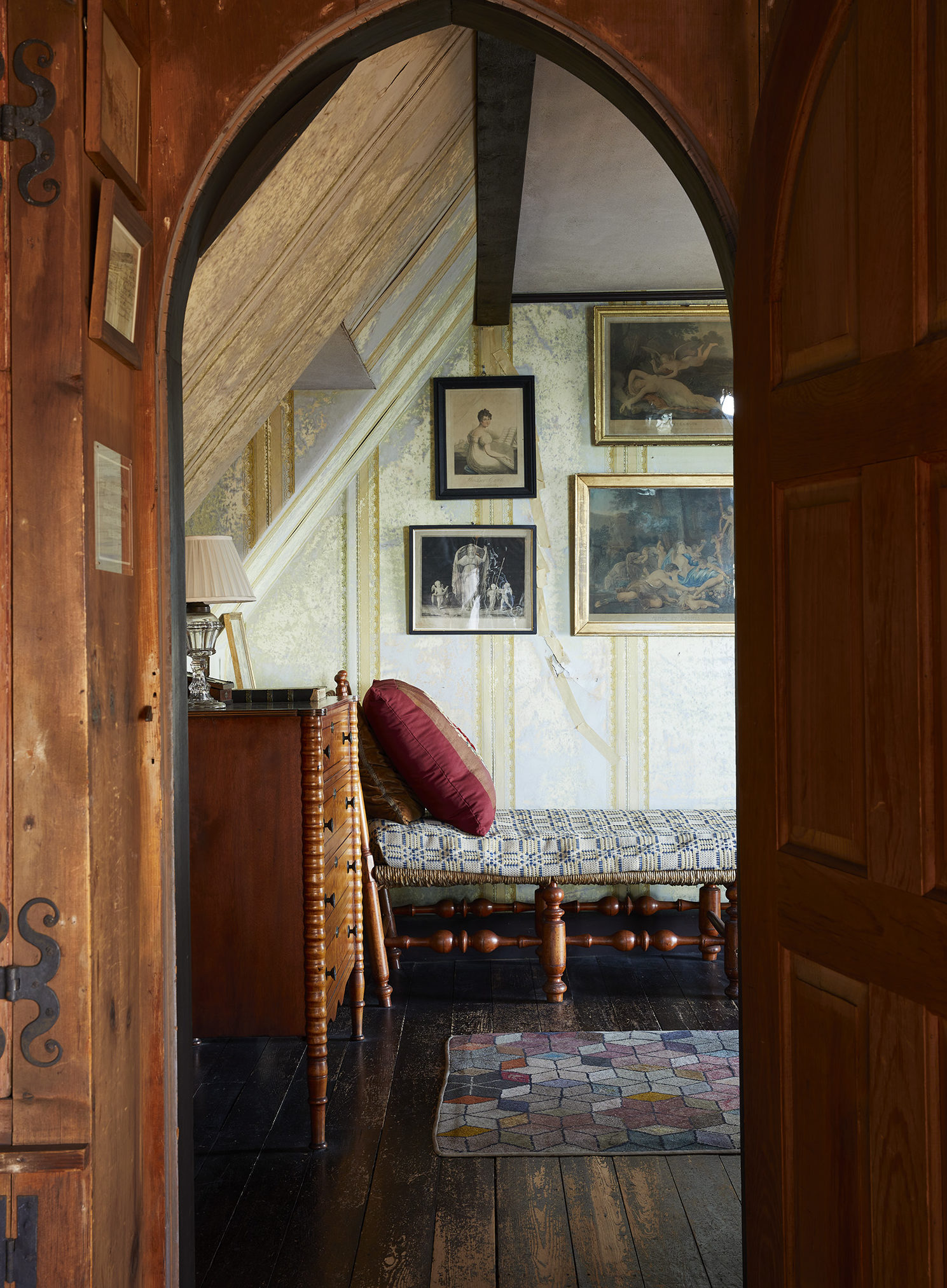
The wallpaper in the music room awaits conservation. Textiles and papers suffer the most in the coastal salt air.
Laura Resen
That year, Helena Woolworth McCann, daughter of the famed Five-and-Dime entrepreneur Frank Winfield Wool- worth, bought Beauport and its contents, and had the good sense to leave it all largely intact. In 1942, her daughters donated the estate to Historic New England, the oldest historic preservation organization in the United States, ensuring that Sleeper’s unique legacy would reach future generations. Here in the 21st century, as upwards of 7,000 visitors learn each year, Beauport isn’t merely a marvelously preserved historic house museum, but also a self-portrait rendered in furniture and decorative items that’s as revealing as any cache of letters or diaries.
Sleeper was 29 in 1907, when he bought a spot of land on a rock ledge overlooking Gloucester Harbor and began designing his dream house. He never stopped. What began as a 22-room Arts & Crafts stone-and-shingle summer retreat for himself and his mother, each room designed around a historic figure or theme, grew into a nearly 10,000-square-foot mansion, more than 40 rooms strong, each distinguished by a color, shape or object. The facade bristled with turrets and gables, even a dovecote and belfry.
-
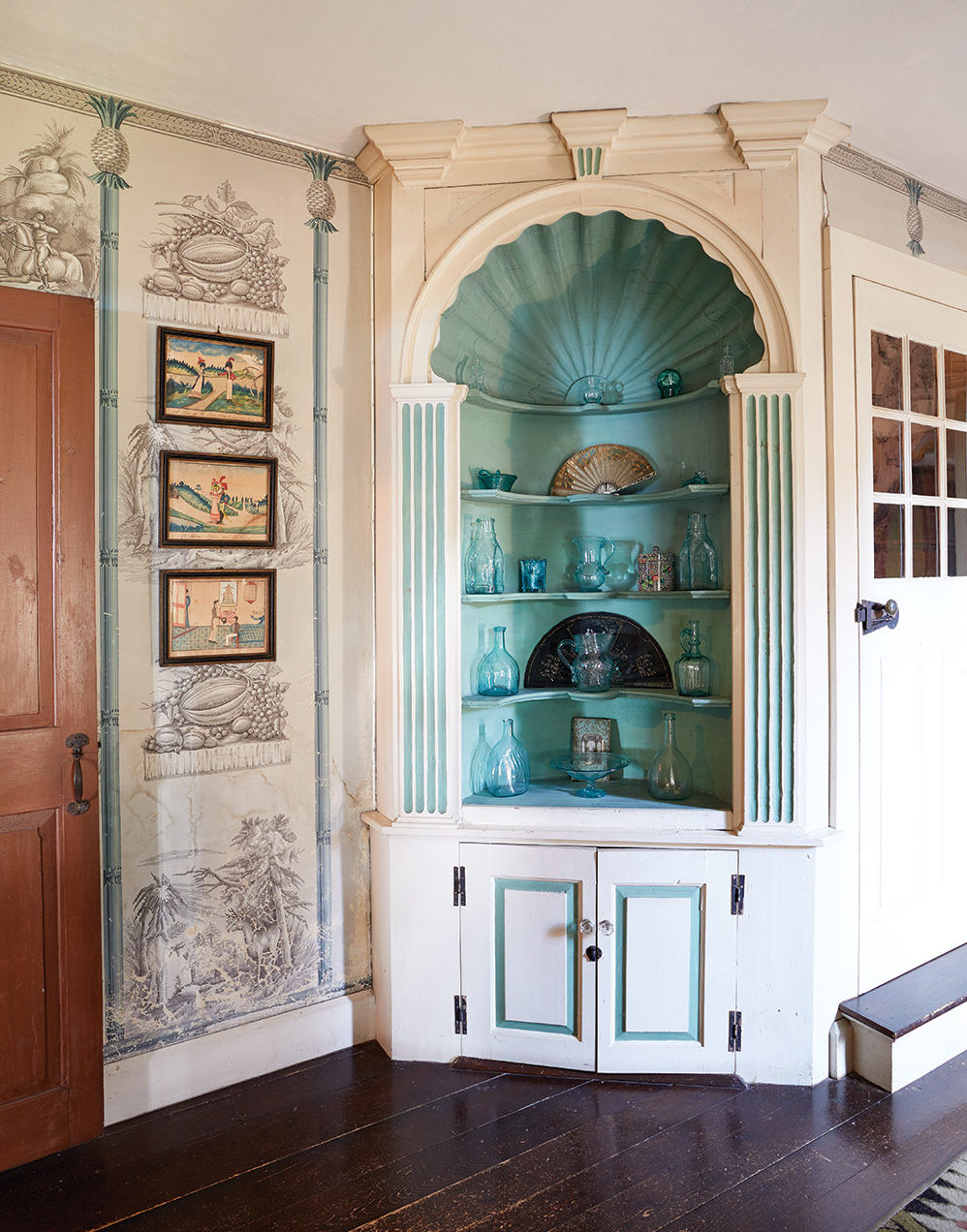
A small reading space called the Pineapple Room is covered in French Zuber wallpaper (a reproduction of the original); the glass-paned door next to the sea-green cabinet leads to a staircase that goes to the top of the two-story Book Tower.
Laura Resen -
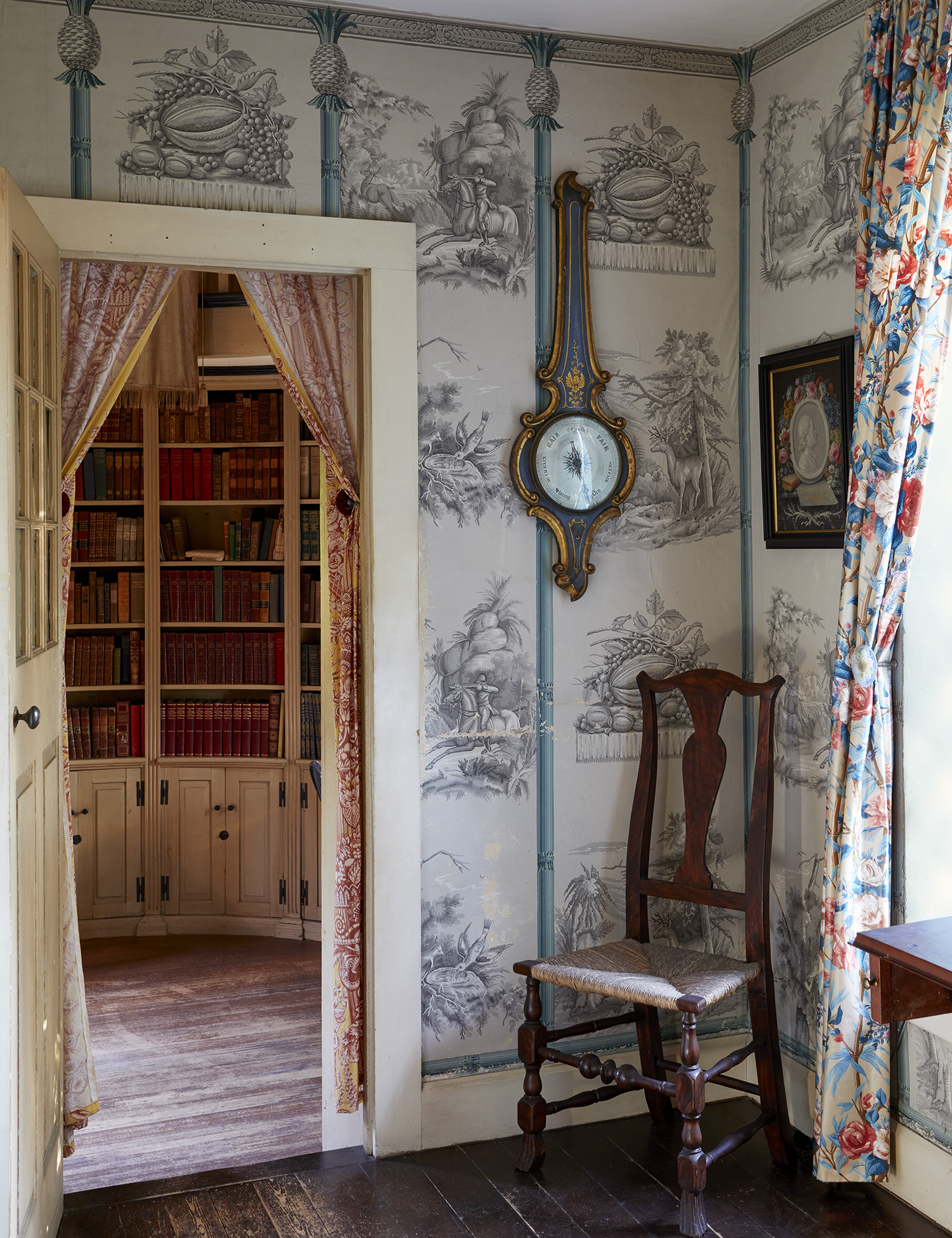
The Book Tower’s castle-like air dignifies Sleeper’s vast collection of books.
Laura Resen
Very quickly, Beauport became equal parts private quarters, entertaining space and—once Sleeper’s guests got a look at his talents—designer showcase for his burgeoning career as an interior decorator. Among his clients were Henry Francis du Pont (who hired Sleeper to help with his summer home, as well as Winterthur), a Vanderbilt, several Hollywood actors and a chain of beauty salons. But Sleeper’s most precious project was the eternally evolving Beauport, which he added to with the same frequency that he built his beloved collections of antiques and objects.
“I’m planning to make a new room at Gloucester….Of course I have all the details visualized and am enjoying it accordingly,” Sleeper wrote to Gardner in 1921, on his way home from France. While there, he’d done what he always did: fall headlong for an everyday decorative element and amass as much of it as possible. In this case, it was antique toleware, tin that’s painted red to imitate Japanese lacquer. He’d call this latest addition the Octagon Room, he explained; everything from the room’s shape to the doorknobs would be eight-sided, and the walls painted black, to better display his finds.
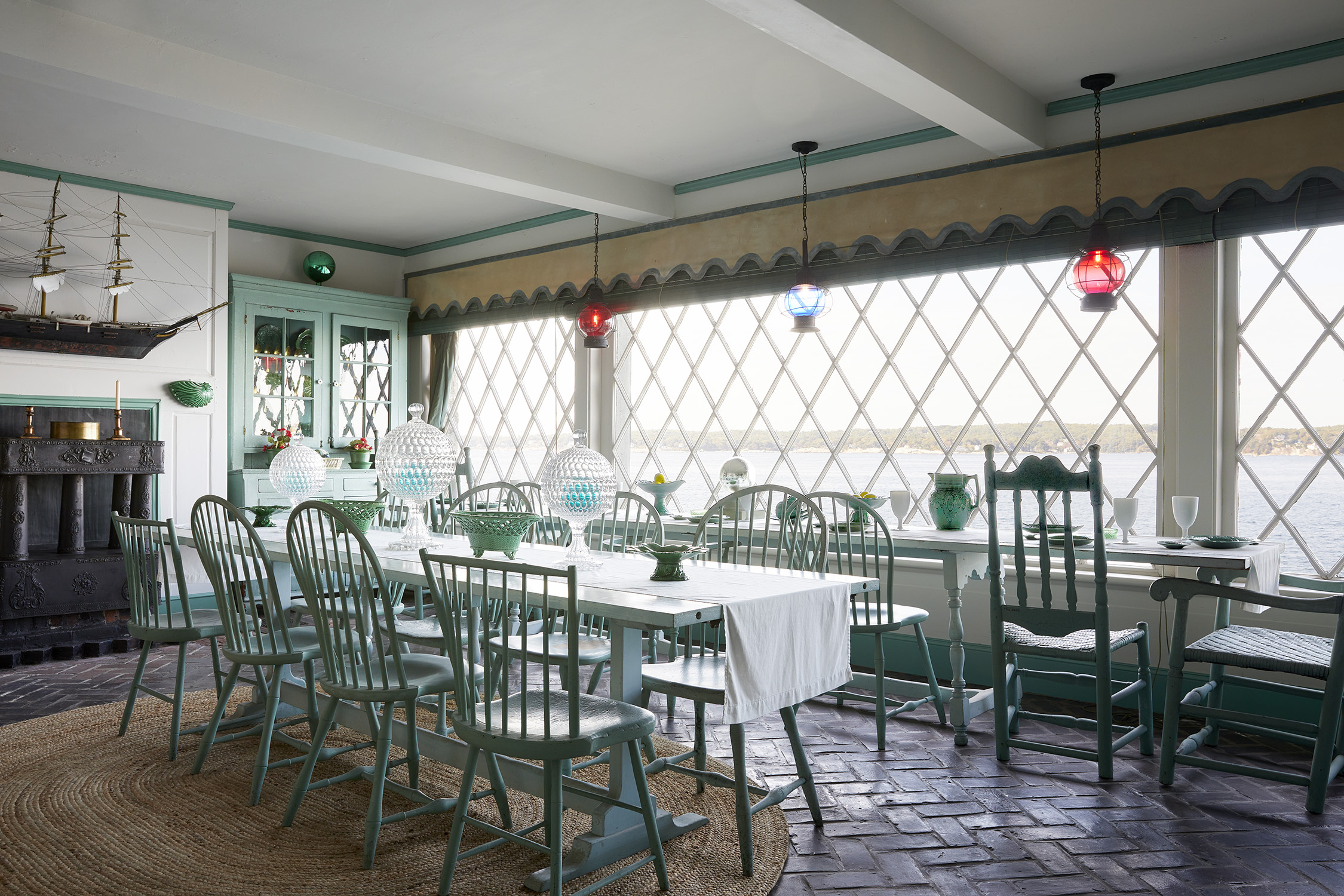
The wall of diamond-paned windows overlooks the harbor, with the largest, at center, rigged on pulleys so it can be lowered into the foundation of the house, for a lovely sea breeze. It was added in 1921, not long after the 1918 influenza pandemic, when open-air designs were all the rage. Down the table’s center, thumbprint glass compotes contain sea-green glass fishing floats.
Laura Resen-
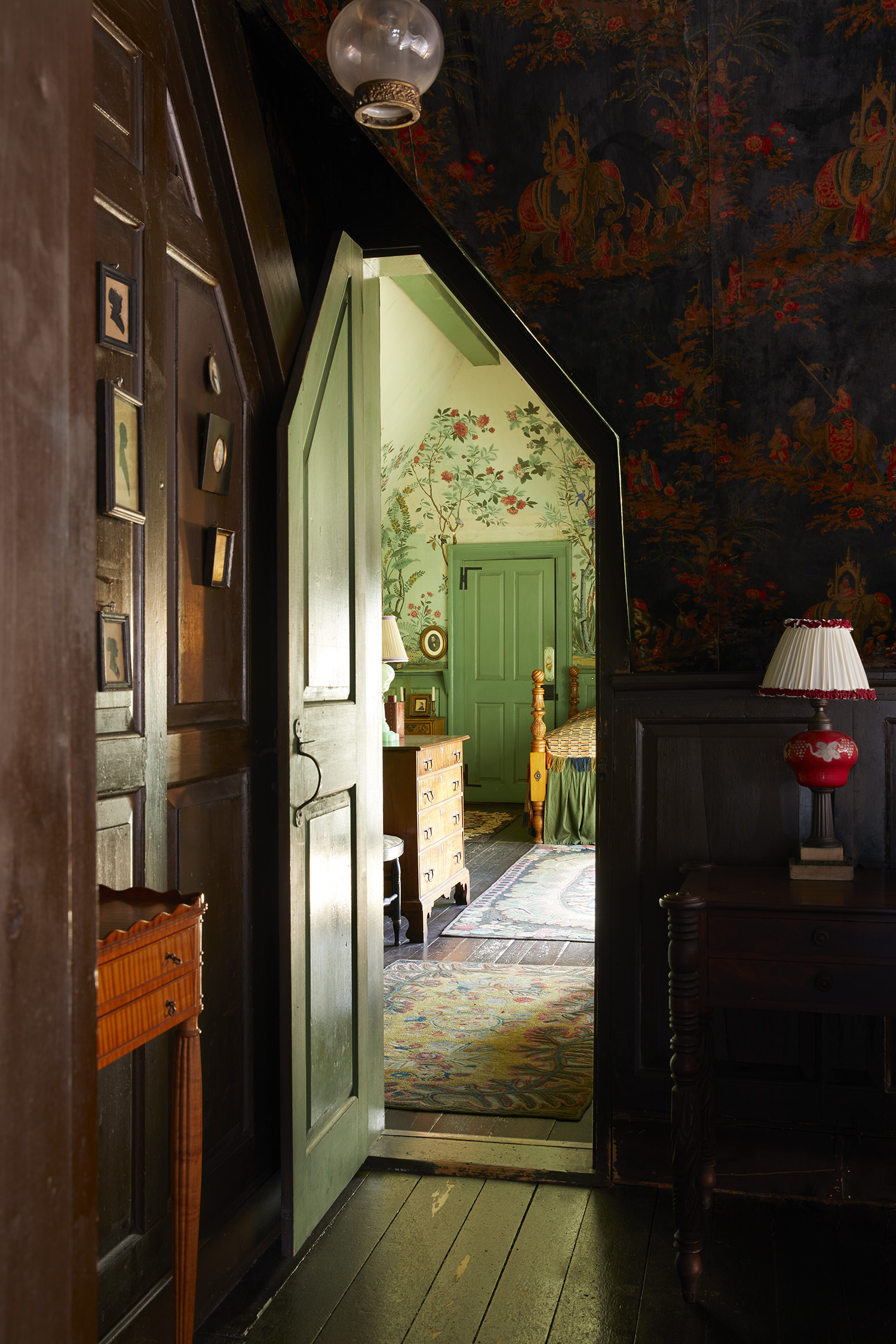
The Strawberry Hill Room, named after the English estate built by another prodigious collector, Horace Walpole, is one of the home’s original rooms. After Sleeper’s mother died, he turned it into his primary bedroom.
Laura Resen -
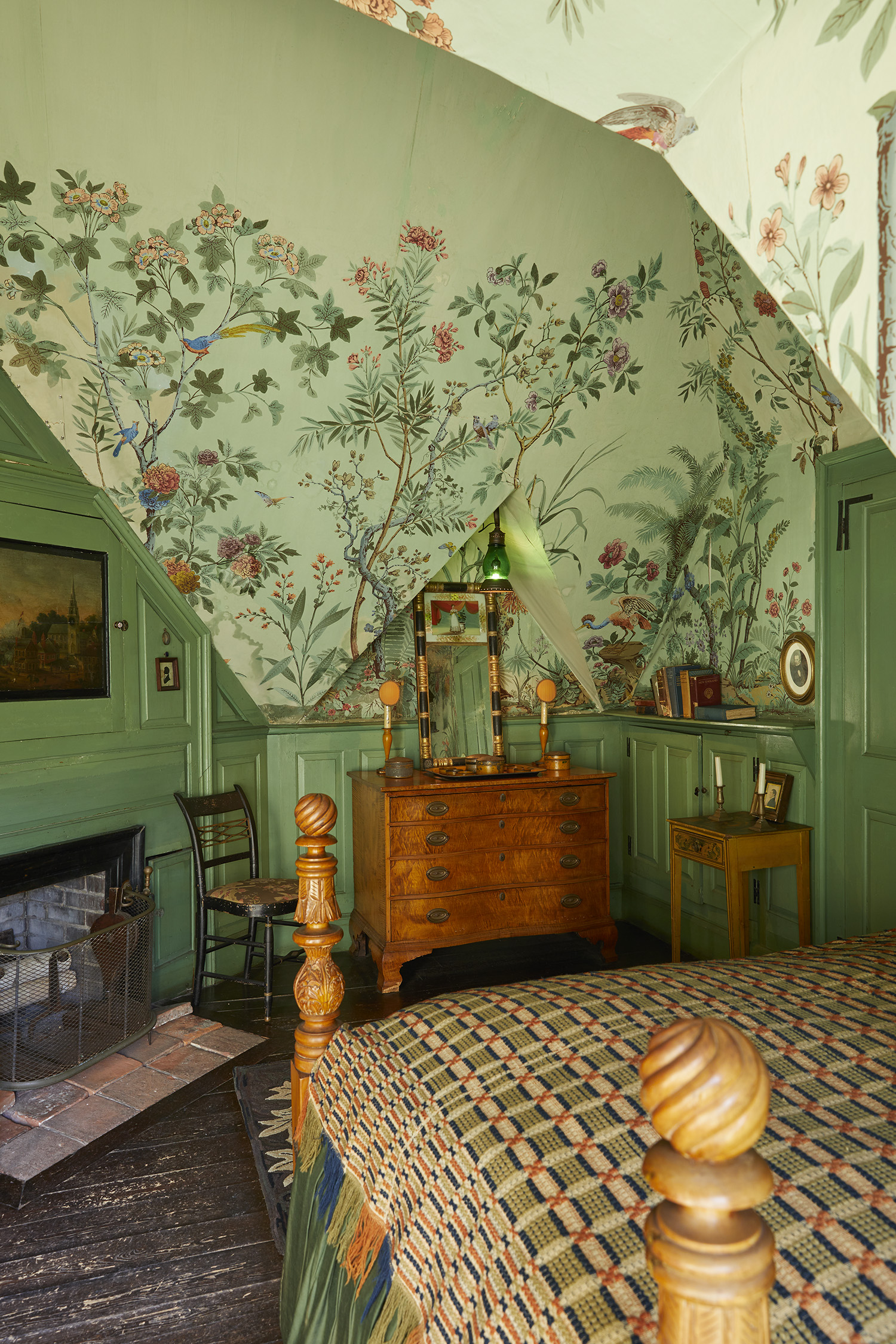
In his Belfry Chamber, Sleeper took great care in cutting the hand-blocked Zuber chinoiserie wallpaper—the same one that Edith Wharton used in her dining room on Fifth Avenue—to fit the room’s unusual angles, in some places decoupaging extra birds or flowers to cover bare spots. Behind the painting over the fireplace is space for a clock mechanism, so that the house’s church steeple could tell the correct time
Laura Resen
Sleeper had an exceptional eye for color and detail, absolutely. But that wasn’t the extent of his talents: His vast and varied collections of Americana—assembled at a time when most Gilded Age elites filled their homes with European antiques—spoke to a quiet but firm unconventionality. “While Isabella Stewart Gardner was collecting Old Masters, and Edith Wharton and Ogden Codman Jr. were establishing guidelines that told readers exactly what to do, Sleeper was playing by his own rules,” said Martha Van Koevering, the current site manager of Beauport. “He embraced and elevated everyday objects to create striking decorative displays, whether he was using salvaged window shutters as paneling or arranging 130 pieces of ordinary colored glass into a three-dimensional window.”
His use of ample salvaged materials—paneling, doors, windows—shows a great respect for the past, and an innate understanding that restoration can also be an act of imaginative creation. Whimsical flourishes—a wood stove in the shape of George Washington; stone-carved ghouls, goblins, and mermaids adorning the facade—show a man with a sense of humor, who prioritized human engagement over producing a grand effect.
-
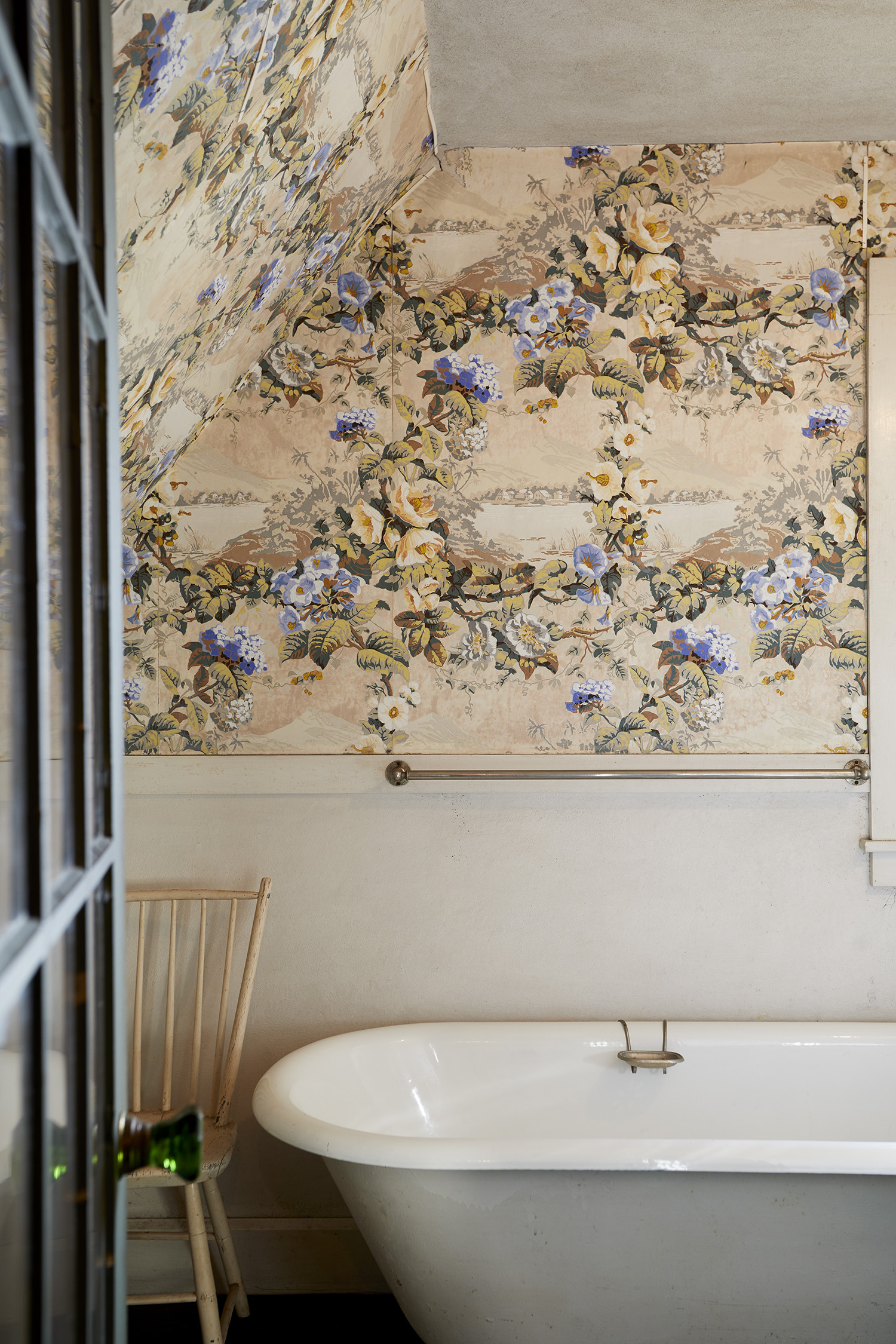
In this house of very few hallways, most rooms are connected by a door, or in the case of bedrooms, outfitted with an adjoining bathroom, which is sometimes shared, such as this one between the Shelley Room and the Blue Willow Room.
Laura Resen -

Small framed portraits and silhouettes appear throughout the house, often in groups of three.
Laura Resen
Beauport was repeatedly featured in the era’s national magazines, from Vogue and House Beautiful to Architect and Country House, as were Sleeper’s collections and many of his commissioned projects. But even the most expert photographs can’t entirely capture how it feels to be inside such a place: The most surprising feature of this wildly inventive house remains how, in spite of its size, and its breathtaking views of the harbor and beyond, it feels so cozy within. A walk through it creates the sensation of a rambling, intimate conversation with a wonderfully curious and considerate interlocutor, one who takes care to both edify and amuse. Maybe someday Sleeper’s lost papers will turn up, and we’ll learn more about him. Until then, Beauport itself serves as an enchanting biography.
See More of Beauport, the Sleeper-McCann House
This story originally appeared in the Spring 2022 issue of FREDERIC. Click here to subscribe!


